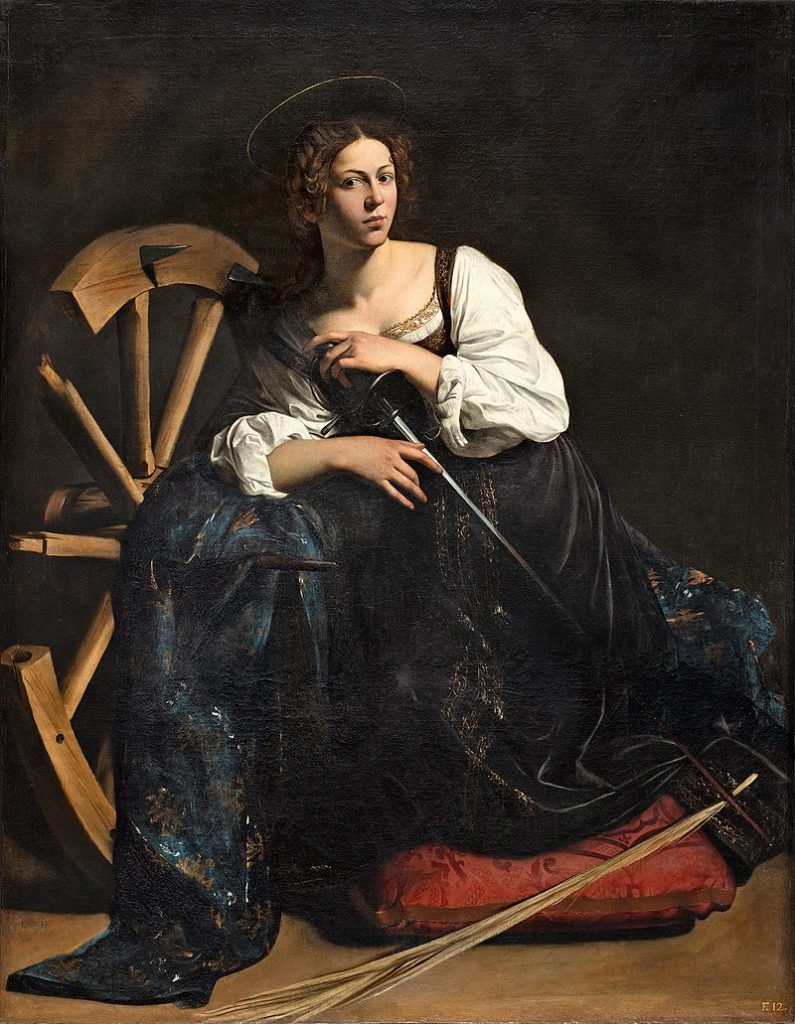
Caravaggio’s painting of “Saint Catherine of Alexandria” is a masterful work that showcases the artist’s distinctive style and dramatic use of light and shadow, known as chiaroscuro. Created around 1598, this artwork depicts Saint Catherine, an early Christian martyr, who was condemned to death on a spiked wheel.
The painting captures a moment of intense emotion and spiritual reflection. Saint Catherine, with her eyes raised heavenward, appears serene despite the imminent threat of her martyrdom. Caravaggio’s skillful rendering of light accentuates the ethereal quality of her expression and illuminates the delicate features of her face.
The composition is marked by a strong sense of realism and psychological depth, typical of Caravaggio’s work. The attention to detail, from the intricate folds of the drapery to the subtle play of light on the saint’s face, contributes to the overall emotional impact of the painting.
Caravaggio’s use of chiaroscuro not only adds a dramatic dimension to the scene but also enhances the spiritual symbolism. The contrast between light and darkness becomes a metaphor for the spiritual struggle and triumph over adversity.
Overall, Caravaggio’s “Saint Catherine of Alexandria” stands as a testament to the artist’s innovative approach to religious art and his ability to infuse his paintings with a profound sense of human emotion and spirituality.
